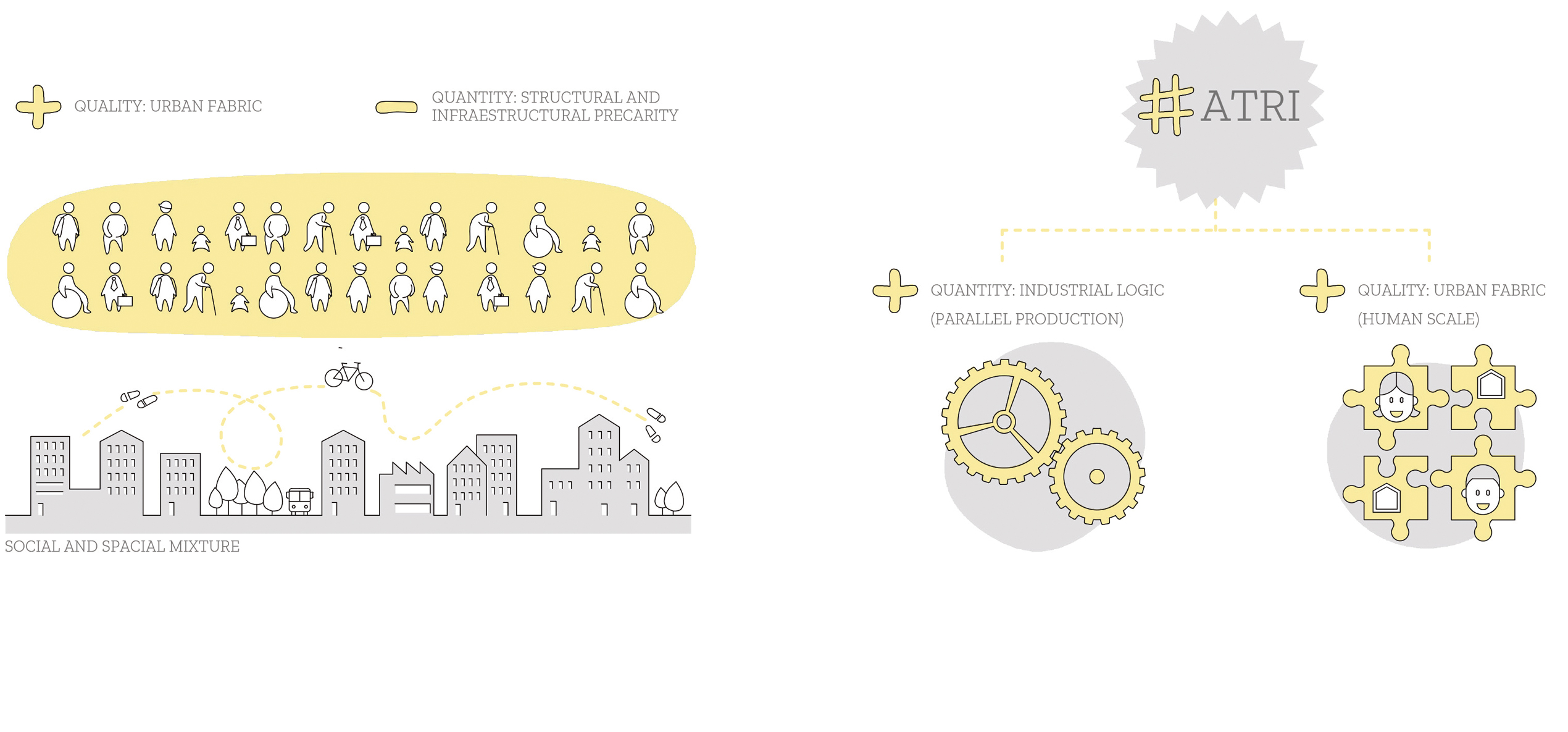Public housing can be much more than a charitable option reserved only for those at the bottom of the social pyramid. It should also be understood as a predistribution tool that is as fundamental to the welfare state as public health, public education or public transport. Experience shows that when it is extended to middle classes, public housing benefits society as a whole because it favors cohesion, diversity and mobility between social strata. In addition to democratizing the social structure, public housing can also be used to stitch together frayed urban fabric. Housing is of course a powerful tool for urban improvement. Through residential policies, compactness and diversity can be conferred and encouraged in the urban fabric.
To attain a compact city, we must increase density where it is lacking, and democratize the possibility of inhabiting already compact areas. To attain diversity, we must boost the residential dimension of “hyperactive" areas, excessively tertiarized or touristified places with abundant daytime jobs and few residents at night. At the same time, we need to strengthen the economic activity of "hyperpassive" areas such as the dormitory town (or bedroom suburb, commuter town, exurb, ville-dortoir) which are abandoned during the working day.
A strategy used to make dispersed, single-use urban fabrics more compact and inject new uses is to build large public spaces (which are often desolate, unsafe, or expensive to maintain). These often excessive public spaces will be much more successful if productive buildings are included in housing estates, and if affordable housing is included in commercial or administrative complexes. On the other hand, there are many available voids in the consolidated fabric of compact cities: plots that remain inexplicably vacant or properties that have not fulfilled their buildability for various reasons. These exceptions damage the urban fabric because they diminish compactness, disfigure the landscape and squander the opportunity to contain life.
Both the desolate wastelands in the dispersed city and the constellation of voids in the compact city are problems that can turn into opportunities. Urban planning requires a strategy of "urban dentistry" that understands these gaps as cavities which damage the city's overall health and treats them with residential "fillings". This is precisely what ATRI is.


